- THE PRINCESS PASSPORT
- Email Newsletter
- Yacht Walkthroughs
- Destinations
- Electronics
- Boating Safety
- Ultimate Boat Giveaway


Midnight Lace 52
- By Chris Caswell
- Updated: October 4, 2007
Possibly the most-imitated scene in yachting is the one in the film Titanic, when young Leonardo DiCaprio stands on the very prow of the steamer and shouts, “I’m the king of the world! Somehow, despite a well-documented tendency toward theatricality, I managed to control my impulse to reenact that movie moment during a recent test of the new Midnight Lace. But I admit it was difficult. Here I was, sitting in the bow cockpit of this sleek 52-footer as it sped across Seattle’s Lake Washington, my face thrust into the breeze. It was so quiet at the bow that I fancied I could hear the hiss of the Cunard liner’s stainless steel as it sliced the dark water below.
It was a moment from another time and place, one that helps explain the spell that the new Midnight Lace casts over you. Yacht designer Tom Fexas created the Midnight Lace back in the ’70s as a paean to those vintage commuter yachts from earlier in the last century, used by wealthy Wall Street magnates and their ilk to commute from their Long Island Sound homes to their offices. As a genre, the commuter yachts had a style and class of their own. Long, usually narrow and low, they were both speedy and luxurious. On fine mornings, the tycoons might sit in the runabout-like bow cockpit and consider the empires they would conquer that day. It kind of gave the term “looking forward a literal interpretation.
On a whim, for his own edification, Fexas drew those same narrow lines for a speculative design. But a client, visiting to discuss a trawler, took one look and chose to build Fexas’ flight of fancy instead. The rest is history: The boat was acclaimed at the Fort Lauderdale Boat Show, Cheoy Lee built fiberglass versions, and the name Midnight Lace entered the yachting lexicon. Production lasted for a decade and 50 yachts remain today as collectors’ items.
Enter Bill Gross of Seattle, a broker and yacht builder, who saw that there was a market for a “new and improved Midnight Lace, particularly in an era when retro is in and all manner of classic designs are being built in modern materials.
The early Laces were-pardon me, Tom-a bit self-indulgent. With a beam of just 13 feet on a 52-foot hull, there wasn’t much room for spacious accommodations. And the puny 240 hp Renault diesels would have been scorned by the tycoons who raced to beat all other challengers to the trading floor.
So Gross convinced Fexas to update the Midnight Lace by making a few subtle (and some not-so-subtle) changes that would make her attractive in today’s market. First, that skinny beam was upped by more than 3 feet to 16 feet, 6 inches. The rounded bathtub transom looked cool, but wasted acres of cockpit space, so the new Lace has a squared transom that looks just fine, thank you. And those little Euro-motors were exchanged for a pair of lusty Caterpillar C-9 turbos of 500 hp each.
The new Lace, however, captures the essence of the old version, with its gently shaped sheerline, the flush foredeck that sweeps up into a steeply raked windshield, and the throne-like flying bridge set well aft on the house. To achieve those low lines, the engines (like the original Lace) are tucked under the cockpit sole with ZF V-drives; a side benefit being superb access to them without ripping up the saloon floor.
The bridge overhangs half the teak-planked cockpit sole and, with the transom lounge, this becomes an easily enclosed all-weather room. But the saloon is also large, surprisingly so, considering the low profile of the superstructure-because it takes full advantage of that extra three feet of beam.
Your first impression is of her ribboned-teak paneling with camphor accents and the teak and holly sole. There is an airiness thanks to the curved windows. A compact but very complete helm is tucked forward to starboard, with a simple black dash that holds a well-chosen array of standard electronics (including radar, GPS, autopilot, VHF and sounder) as well as the Caterpillar MPD displays.
There’s room for a pair of loose chairs to starboard, facing the L-shaped leather couch by the large windows. The cocktail table has a separate top that converts it neatly into a dining table; a dedicated compartment in the saloon stores the top when not in use.
The entertainment system is notable for being both extensive and included in the base boat price. Considerable thought has resulted in a professional installation on a Mid-Atlantic pull-out studio rack that includes a Denon DVD disc changer and surround-sound receiver, plus a KVH satellite TV system, all controlled by an AMX touch screen. A 42-inch pop-up TV is to starboard, while the master stateroom has a Sharp 13-inch flat-screen TV.
The galley is a couple of steps down but open to the saloon, with the forward windows serving as skylights so the cook never feels cooped up. A big Sub-Zero refrigerator, with a pair of freezer drawers, is teak paneled to match the cabinets, and the black granite counter sweeps around with ample space for meal preparation. There’s also plenty of fully finished storage space in cabinets and overhead lockers.
Several different layouts are available; all take advantage of the added beam to create sizable cabins. Our test boat had the standard three-stateroom arrangement with the forward master stateroom, plus a double and a bunk cabin, which I’d expect to be the most popular. Another appealing arrangement puts the master opposite the galley, while two or three cabin layouts offer an office area, a dinette near the galley or a VIP stateroom.
In our standard layout, a bunk bed cabin is to starboard opposite the galley. Though you might expect it to be cramped, it’s quite civilized with good standing room, a hanging locker and even a night stand.
Move forward along the offset passageway and you’ll find the double stateroom to port-which, once again, is surprisingly large. Drawers are under the berth, louvered doors cover a full-length hanging locker, and an overhead hatch provides natural light and air. The day head is across the passage, with a big shower behind a Lucite door and Corian flooring for low maintenance.
The master stateroom fills the bow with a raised 6-foot, 6-inch berth (more drawers are underneath) and a large hanging locker by the entry door. A clever touch is the ladder that mates to the large overhead hatch to provide foredeck access (including that bow seat). It has hidden storage under the berth. The en suite head for the master is to port, with a comfortably sized shower and black granite counters for the vanity.
Heading aft, you’ll notice that the stairway by the galley is hinged: Touch a switch and it raises hydraulically to reveal a walk-in laundry area, lined in fiberglass and fitted with separate Fisher and Paykel washer and dryer. There’s also storage as well as the hot water heater for easy access.
The bridge benefits from the added beam, with a fiberglass dashboard console amidships, a pair of STIDD swivel helm chairs and a bench seat aft. The bridge is lightly crowned for water runoff, and the windshield is low and protected by a stainless steel grab rail.
Forward, the classic lines have been maintained by the rails on the cabin house that blend almost invisibly into hand rails above the windows, making for a secure path to the bow. Construction is likewise secure, solid and well-proven, with Knytex fiberglass, Corecell foam coring and oversized stringers tied to wood bulkheads. The bottom is protected from blisters by Interlux coatings, and the fuel tanks are Epiglass epoxy fiberglass.
Quality on the new Lace can only be described as top drawer, with Gross specifying only the best equipment throughout, from the Cantaluppi lighting to the Grohe bath fixtures. The same thinking went into the standard SeaRecovery watermaker, GE appliances, Cruisair a/c, VacuFlush heads, MMC Cruise Command electronic engine controls, Delta T engine air-filter system and custom electrical panel.
Underway, the Midnight Lace was a pure delight. KeyPower bow and stern thrusters are standard and, unlike electric thrusters that overheat, you can lock these hydraulic thrusters to hold the boat against the dock while you singlehand the lines.
Push the throttles forward and the Lace simply surges ahead without struggling to climb over its bow wave. The trim angle was almost unmeasurably flat and the boat ran level at all speeds without needing trim tabs, which suggests both a slippery and well-designed hull.
Our test boat was brand new and, though we topped out at 23-plus knots, Gross was disappointed. As it turned out, we were handicapped by two factors. First, we were in fresh water-measurably slower than more buoyant salt water. Second, we were underpropped by more than an inch. With a repitched prop and in seawater, Gross found that the boat was easily reaching the 24-knot design speed.
That great forward cockpit deserves one more encore. The standard boat includes Mathers shifter/throttles and a Furuno autopilot control in the bow, so you can easily run the boat from up forward. I know that would be my helm of choice-and probably Leonardo DiCaprio’s. However, I did find one thing missing from the otherwise very comprehensive Midnight Lace standard equipment list: a cashmere lap blanket.
Every tycoon has one.
Contact: Yacht Enterprises, (800) 370-6358; www.midnightlaceyachts.com .
- More: Motoryachts
- More Yachts
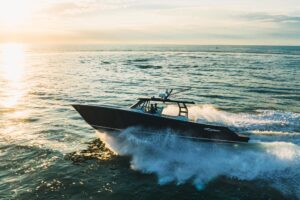
Halo 470 Reviewed
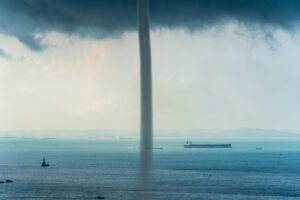
Superyacht Collision, Sinking Incident, Takeaways and Lessons
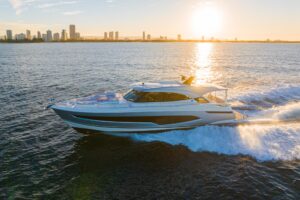
Riviera to Unveil 6800 Sport Yacht at Fort Lauderdale International Boat Show
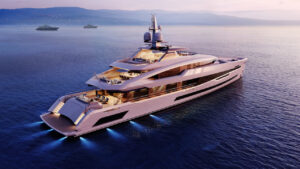
Heesen Reveals “Santosha” Details
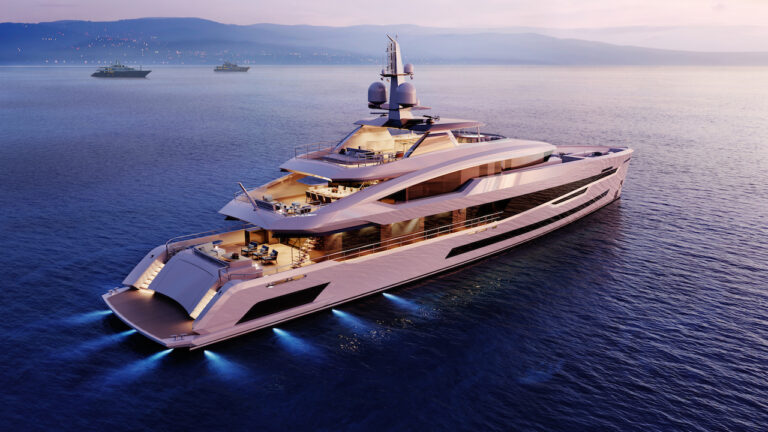
For Sale: 2006 84′ Lazzara
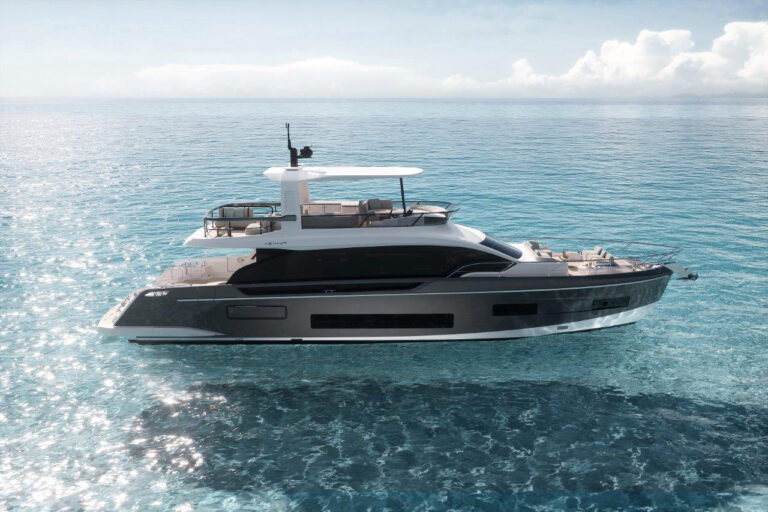
Azimut Launches the Fly 62

For Sale: 2015 Beneteau Swift Trawler 50

- Digital Edition
- Customer Service
- Privacy Policy
- Terms of Use
- Email Newsletters
- Cruising World
- Sailing World
- Salt Water Sportsman
- Sport Fishing
- Wakeboarding

44' Cheoy Lee midnight Lace

Boat Name: NIGHTHAWK
Current Price: US$ 125,000
Located in Jacksonville, FL
Hull Material: Fiberglass
Engine/Fuel Type: Twin diesel
YW# 25066-3528399
Central/Exclusive Listing
Available for co-brokerage

NIGHTHAWK is an excellent example of a of well cared for yacht. Being kept under cover in near freshwater environment NIGHTHAWK will not disappoint! This famous design by the legendary Tom Fexas is incredible riding and efficient hull design. Built in the world renown Cheoy Lee Shipyard in Hong Kong the attention to detail is most impressive. We invite to see NIGHTHAWK at your earliest convenience.
NIGHTHAWK cruises effortlessly at 20 knots while operating at 70% power Top speed observed is 29 knots.
Additional Specs, Equipment and Information:
Builder: Cheoy Lee Shipyards Designer: Tom Fexas
LOA: 44 ft 0 in Beam: 13 ft 0 in Displacement: 13600 lbs
Engine 1: Engine Brand: Cummins Year Built: 2008 Engine Model: 6BTA 370 Engine Type: Inboard Engine/Fuel Type: Diesel Location: Starboard Engine Hours: 540 Drive Type: V Drive Engine Power: 370 HP Engine 2: Engine Brand: Cummins Year Built: 2008 Engine Model: 6BTA 370 Engine Type: Inboard Engine/Fuel Type: Diesel Location: Port Engine Hours: 540 Drive Type: V Drive Engine Power: 370 HP
Fresh Water Tanks: 2 Stainless steel (50 Gallons) Fuel Tanks: 2 Stainless steel (100 Gallons) Holding Tanks: 1 Plastic (45 Gallons)
Accommodations
Number of double berths: 1 Number of heads: 1
Electronics
Plotter Compass Autopilot GPS Cockpit speakers Wind speed and direction Depthsounder VHF CD player TV set Log-speedometer
Inside Equipment
Air conditioning Marine head - Vacuflush Hot water Heating Electric bilge pump Oven Battery charger Refrigerator Fresh water maker Microwave oven
Electrical Equipment
Generator - Onan 9kw Shore power inlet Inverter Electrical Circuit: 220V
Outside Equipment/Extras
Swimming ladder Cockpit cushions Cockpit shower Teak cockpit Electric windlass
Raytheon intergraded navigation system including depth, multi speed, autopilot with remote, 12" color flat screen display connected to onboard CPU using Capt.'s navigation software on windows platform. 2 Icom vhf radios. Raymarine 12 mile Radar with Raymarine display.
In addition the vessel has a KVH system, flat screen TV with DVD player, am/fm sound system.
Onan generator 9kw MDKB
Batteries, house bank 6 6volt Lifeline AGM
Link 200 R control
Xantrex 3000 watt inverter/charger
Engine start lifeline 8-D AGM
Generator start 1, Group 32 AGM
Mastervolt 50 amp charger
Engine Synchronizer
U-line under counter frost free refrigerator with freezer.
Custom double sink with hot & cold pressure water system
Uline ice maker
Convection Oven
Microwave oven
3 burner electric glass stove top
Addtional gear
Village 12VDC 8gph Water Maker
4 Bilge pumps
Bennett Trim Tabs
Newer hydraulic steering system
Search light
2 VacuFlush head systems
Oil Changing system for engines, gears and generator.
Ground tackle
Custom SS plow anchor with 180' 5/8 chain.
Maxwell power windlass electric with 2 control stations
4 blade props
Line cutters
Disclaimer The Company offers the details of this vessel in good faith but cannot guarantee or warrant the accuracy of this information nor warrant the condition of the vessel. A buyer should instruct his agents, or his surveyors, to investigate such details as the buyer desires validated. This vessel is offered subject to prior sale, price change, or withdrawal without notice.
Log in or Sign up
You are using an out of date browser. It may not display this or other websites correctly. You should upgrade or use an alternative browser .
Midnight Lace
Discussion in ' Powerboats ' started by Willallison , Sep 2, 2002 .
Willallison Senior Member
I've always been a bit of a Tom Fexas fan. I particularly like the results of his earlier collaboration with Cheoy Lee, designing their range sportsfishermen, fast motoryachts and of course the Midnight Lace series. In conjunction with Rex Yacht's, Fexas is reincarnating the Lace range with new 42 and 52 footers. But a few minutes of browsing over the web site ( http://www.rexyachts.com/midnight/ ) leaves me wondering whether this isn't simply an attempt to ride the current wave of popularity for all things retro, with little regard to the fundamental principles that made the originals so successful, or whether design has moved on to the point where 'long, lean and light' are no longer the necessary attributes for producing an efficient and fast motoryacht. Some figures: The original 44 weighed in at 17500#, had a beam of 11', giving a length/beam ratio of exactly 4. With a pair of 220hp diesels the 44 managed a top of 27 knots and cruised at 20, using a total of 220hp and 10.5pgh. It was very efficient throughout its speed range. Yet the new boat at 42' LOA has a beam of 14ft, blowing the length/beam ratio out to 3. It is also heavier at 25000#. Yet with only marginally more power (a pair of 250hp yanmars) the boat is still expected to have a top speed of around 25 knots. I couldn't find any other performance estimates, like those given for the original boat. So, have we moved on to the point where fat and heavy (well, heavier) can still be economical and efficient, or am I right to be somewhat sceptical of the new Midnight Laces credentials?.......
tom28571 Senior Member
Will, Once a boat is well up on plane, the length is not a big factor in determining speed potential. The new boat appears to have a bottom loading (when planing) only about 11% over the older one so the extra power should be enough to make similar speed. It may have a higher initial planing speed. Like you, other things being equal, I'd prefer the longer one for greater comfort and probably lower operating costs.
One of the things Fexas points out in articles written at the time of the original Lace's release is that the boat by his definition never actually gets on the plane - he termed the hull as a penetrating hullform. Hence he incorporated features such as round chines to help the 'slip' through the water. Take a look at one of those articles http://www.rexyachts.com/midnight/acase.html Now the new boat is no faster, yet incorporates hard chines etc. Perhaps the new boat is designed to plane at lower speeds? But then one of the greatest attributes of the original was its ability to travel at almost any speed without efficiency penalties. Indeed he points out that a pair of 130hp engines would give the boat a cruise of 18knots. I wonder if the same could be said of the new boats?.......
Will, It's useless to get into an argument about what constitutes planing but at a speed of over four times the sq root of waterline, it's clear that much of the weight is being supported by dynamic forces. The 44 is in no way long enough or narrow enough to escape the need to plane to make this much speed. I too doubt that the new one has the broad speed range of the old, but that is the way things have been going in power boats for some time. The new boat is actually bigger than the old and costs less to berth in a slip.
All too true Tom - but (with me there's always a but ) with a waterline length of 40ft, 4x its square root is actually 25 knots - exactly the point Fexas makes in that article I posted a link to in my last post, so by that definition the hull is still not truly planing at 20 knots (the designed cruise speed of the 44). I have no doubt that you and I are of exactly the same opinion when it comes to how the new boat will perform in relation to the old - I'm just waiting for someone to tell me I'm wrong. You only have to take a look at "Liz" to see that a boat can be designed to be truly on the plane at speeds well below the theoretical minimum, but given the weight of the new Lace, I'd be surprised if this boat could manage the same sort of efficiencies. And it's not that I doubt Fexas's ability to create an efficient up-to-date hullform - as I said at the outset, I'm somewhat of a fan. It's just that the new boat seems to have completely abandoned the principals of the old. If I'm correct, then the new boat becomes simply a marketing exercise - trading on the success of the original design, yet incorporating none of the elements that earned it that succcess.
As Cool Hand Luke's chain gang guard would say "What we have here is a failure to communicate". I did not mean to give any limits to what is and what is not planing, just that at 25 or even 20kts, the boat is running at many times the square root of its waterline length and must be getting a fair amount on dynamic support. This is true for all boats other than those having very high length/beam ratios which can run at pretty high speed in displacement mode. Neither of the Fexas boats have ratios high enough (generally considered to be 10:1 or more) to fit this profile. So it is my guess that Fexas was using a customer bias against rough riding planing boats to market the original by claiming that his 44 footer was not a "plaining hull".
- Advertisement:
Quite possible Tom. It must be said though that the original boat was way more efficient than most boats produced both then and today. And the thing I like most is that it remained efficient regardless of speed. I guess this is a result of light weight, narrow beam and hullform......
Planing catamaran vs planing mono hull vs displacement cat fuel 8kts
Cygnus 19' GRP displacement fishing boat in England - a question re the engine
Low displacement coastal cruiser around 40' / 12M
How does one work out best place for center console on a hull rebuild.
Semi displacement conversion to outboards
Need to replace Kobelt fly by wire
1977 midland under deck fuel tank placement?
Displacement hull performance
Steady and storm sails in displacement powerboats.
below deck gas tank replacement
- No, create an account now.
- Yes, my password is:
- Forgot your password?

|
| to visit | ||||||
and there is a magazine article available describing some of the theory behind the design of these boats-- by designer Tom Fexas and cited on that webpage.
| ||||||
BACK to C.L. Power Page
|